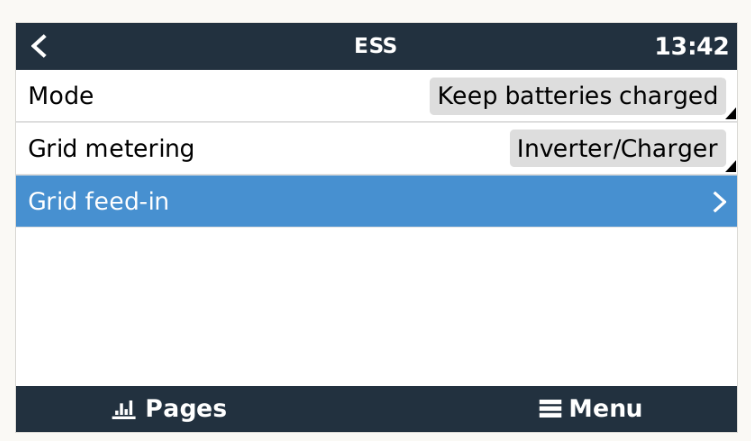Hi,
First, please accept my apologies in advance for the long post. I tried to find answers as much as possible from the documentation.
A local installer recently installed an AC coupling solution for my home, consisting of a Quattro 8k, Fronius 8.2, Cerbo GX with touchscreen, 24kwh BYD LVS Premium and 14*535W panels.
I am still connected to the grid which is still cheap where I live, but I only get that 2-3 hours a day, and it doesn't support (for now) feeding back to the grid. It is still a good option to have especially during the night and very cloudy days. But anything fed back is being counted towards my bill as usage.
It is configured as ESS, but its mode is set to "keep batteries charged", so I don't see any of the settings for zero feed-in with Fronius and whatnot, I only see "Grid feed-in" menu, active changed to yes but this screenshot was during a grid outage:


That's not working very well. During the day with 100% battery and it's sunny, I still feed-in around 1kwh in the short 1-2 hours the grid is available (which I am paying for as usage).
I am thinking that an Optimized mode is better. Like the below example from the wiki:
 But I am not sure which one to set, with or without battery life? Then I turn on "Fronius Zero feed-in" and have the "minimum Discharge SoC" to a high number, maybe 80%?
But I am not sure which one to set, with or without battery life? Then I turn on "Fronius Zero feed-in" and have the "minimum Discharge SoC" to a high number, maybe 80%?
I also assume I need to have "Feed-in excess solarcharger power" to off? What's the recommended settings for my setup?
Side question #1: I only had the system for a couple of days, but I am getting a high voltage alarm briefly every time the batteries reach 100% during the day and I see there is a 0.25V difference between minimum cell and maximum cell voltage. Is this something to worry about?
Side question #2: is there a way to get a time to go value for this setup? (like the one in the smartshunt?)

